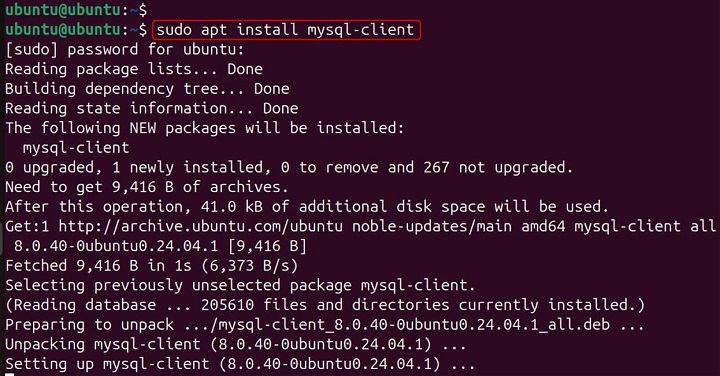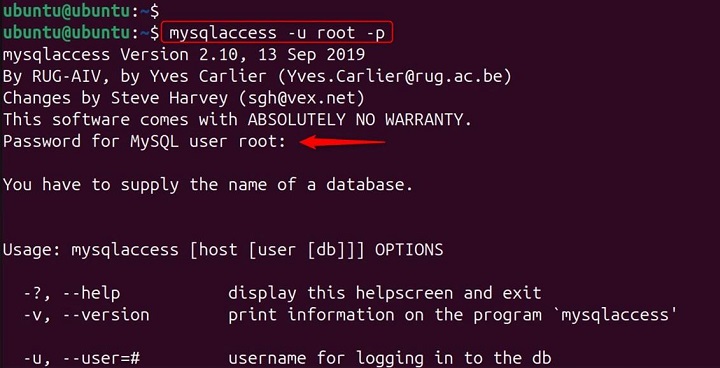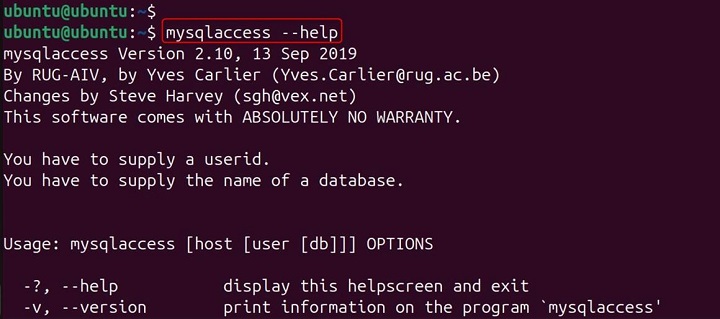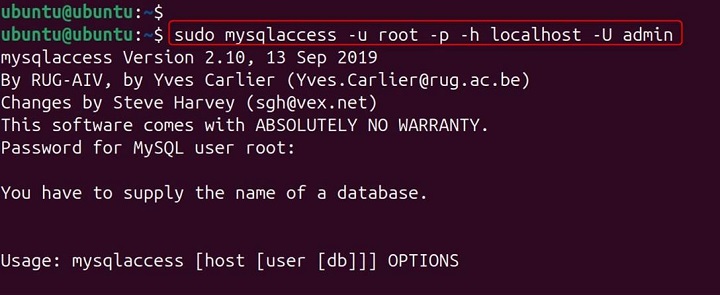
mysqlaccess Command in Linux
mysqlaccess is a Perl script provided with MySQL that helps manage user privileges in a MySQL database. It allows database administrators to check and modify user access rights in a more user-friendly manner compared to directly using SQL commands.
Table of Contents
Here is a comprehensive guide to the options available with the mysqlaccess command −
Understanding mysqlaccess Command
mysqlaccess is used to check the access privileges for a host name, user name, and database combination. It checks access using only the user, db, and host tables. mysqlaccess is a Perl script provided with MySQL that simplifies the management of user privileges in a MySQL database. It offers a more user-friendly interface compared to directly using SQL commands.
To begin with, mysqlaccess is typically included with the MySQL client package, and if not already installed, it can be added using package managers like apt for Debian-based systems or yum for Red Hat-based systems.
Overall, mysqlaccess provides a robust and efficient way to manage MySQL user privileges, making it an essential tool for database administrators. By understanding and utilizing the various options and commands available in mysqlaccess, administrators can ensure the security and integrity of their MySQL databases.
How to Use mysqlaccess Command in Linux?
mysqlaccess is a diagnostic tool provided with the MySQL distribution that helps database administrators check access privileges for a host name, user name, and database combination. It is particularly useful for verifying user permissions and ensuring that the correct access controls are in place.
This tutorial will cover the installation, usage, and examples of mysqlaccess commands on a Linux system.
Installing MySQL and mysqlaccess
Before using mysqlaccess, you need to have MySQL installed on your Linux system. mysqlaccess is included with the MySQL client package. If it's not already installed, you can install it using your package manager.
For Debian-based systems (e.g., Ubuntu),
sudo apt update sudo apt install mysql-client

For Red Hat-based systems (e.g., CentOS)
sudo yum install mysql
Verify installation −
which mysqlaccess

Basic Usage of mysqlaccess
The basic syntax for using mysqlaccess is as follows −
mysqlaccess [host_name [user_name [db_name]]] [options]
Checking User Privileges
One of the primary uses of mysqlaccess is to check the privileges of a MySQL user. This can be done using the -u option to specify the user and the -p option to prompt for the password.
mysqlaccess -u root -p

This command will prompt you for the root user's password and then display the privileges for the specified user.
Specifying the Host
You can specify the host for the MySQL server using the -h option. This is useful if your MySQL server is running on a different machine.
mysqlaccess -u root -p -h localhost

Checking Privileges for a Specific Database
To check the privileges for a specific database, use the -d option followed by the database name.
sudo mysqlaccess -u root -p -h localhost -d mydatabase

Generating Reports in Table Format
You can generate reports in table format using the -t option. This option displays the privileges in a tabular format.
sudo mysqlaccess -u root -p -h localhost -d mydatabase -t

Generating Reports in Single-Line Tabular Format
To generate reports in a single-line tabular format, use the -b option.
sudo mysqlaccess -u root -p -h localhost -d mydatabase -b

Displaying Help Message
To display a help message and exit, use the --help or -? Option.
mysqlaccess --help

Specifying the Superuser
You can specify the superuser for connecting to the MySQL server using the -U option followed by the superuser name.
sudo mysqlaccess -u root -p -h localhost -U admin

Specifying the Superuser Password
To specify the superuser password, use the -P option followed by the password. If you omit the password value, mysqlaccess will prompt for one.
sudo mysqlaccess -u root -p -h localhost -U admin -P

Reloading Temporary Grant Tables
You can reload the temporary grant tables from the original ones using the --copy option.
sudo mysqlaccess -u root -p -h localhost --copy

Committing New Access Privileges
To copy the new access privileges from the temporary tables to the original grant tables, use the --commit option. The grant tables must be flushed for the new privileges to take effect.
sudo mysqlaccess -u root -p -h localhost --commit

Rolling Back Changes
To undo the most recent changes to the temporary grant tables, use the --rollback option.
sudo mysqlaccess -u root -p -h localhost --rollback

Previewing Privilege Differences
You can preview the privilege differences after making changes to the temporary grant tables using the --preview option.
mysqlaccess -u root -p -h localhost --preview

Displaying Release Notes
To display the release notes, use the --relnotes option.
sudo mysqlaccess -u root -p -h localhost --relnotes

Displaying Suggestions and Ideas for Future Releases
To display suggestions and ideas for future releases, use the --plan option.
sudo mysqlaccess -u root -p -h localhost --plan

Connecting to an Old MySQL Server
If you need to connect to a very old MySQL server (before MySQL 3.21) that does not know how to handle full WHERE clauses, use the --old_server option.
sudo mysqlaccess -u root -p -h localhost --old_server

Specifying the Debug Level
You can specify the debug level using the --debug option followed by an integer from 0 to 3.
mysqlaccess -u root -p -h localhost --debug=2

Displaying Examples
To display some examples that show how to use mysqlaccess, use the --howto option.
sudo mysqlaccess -u root -p -h localhost --howto

Conclusion
mysqlaccess is a valuable tool for managing and verifying user access privileges in a MySQL database. It provides a user-friendly interface for checking and modifying access rights, making it an essential tool for database administrators.
By understanding and using the various options and commands available in mysqlaccess, you can effectively manage user privileges and ensure the security and integrity of your MySQL databases.